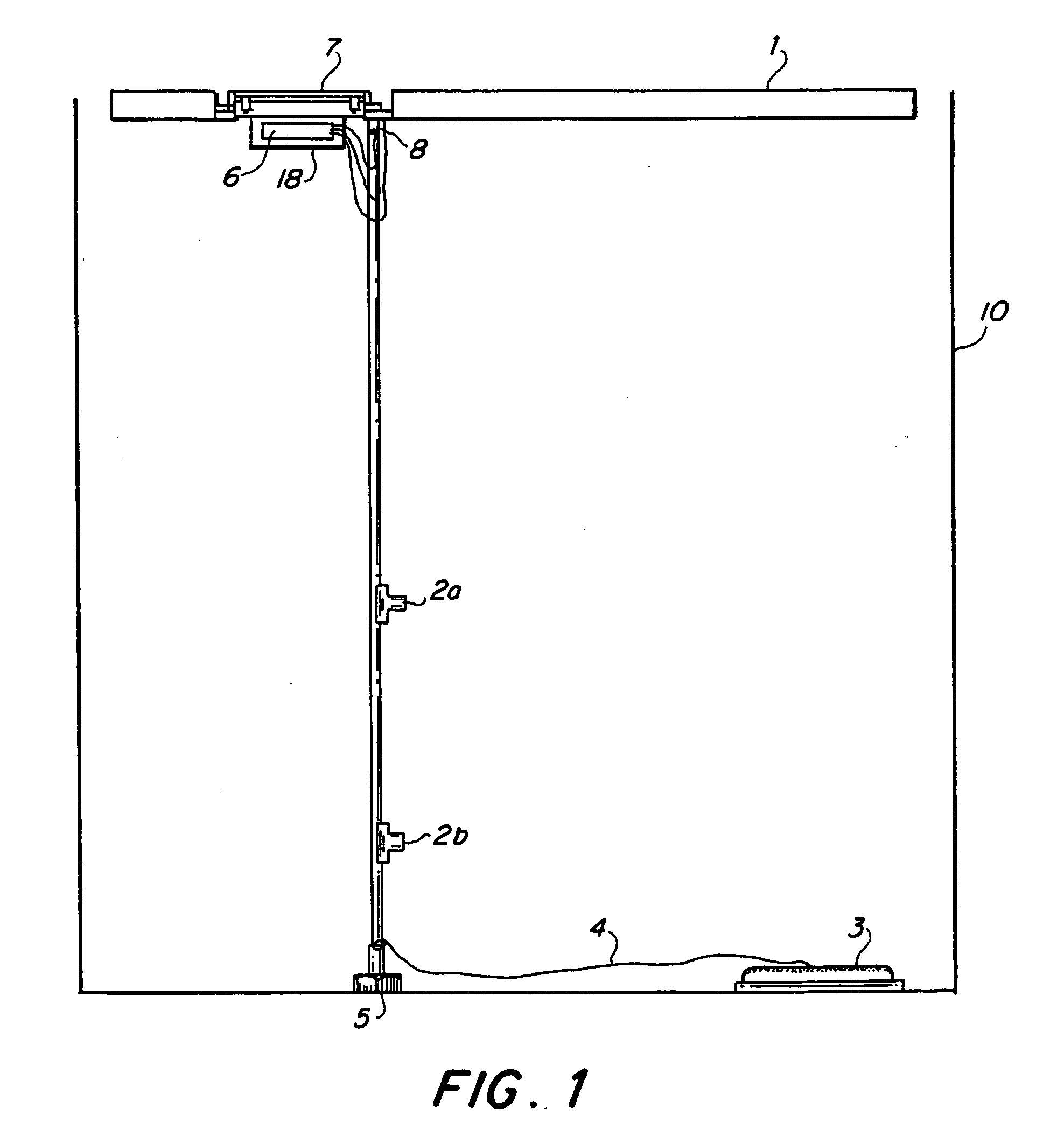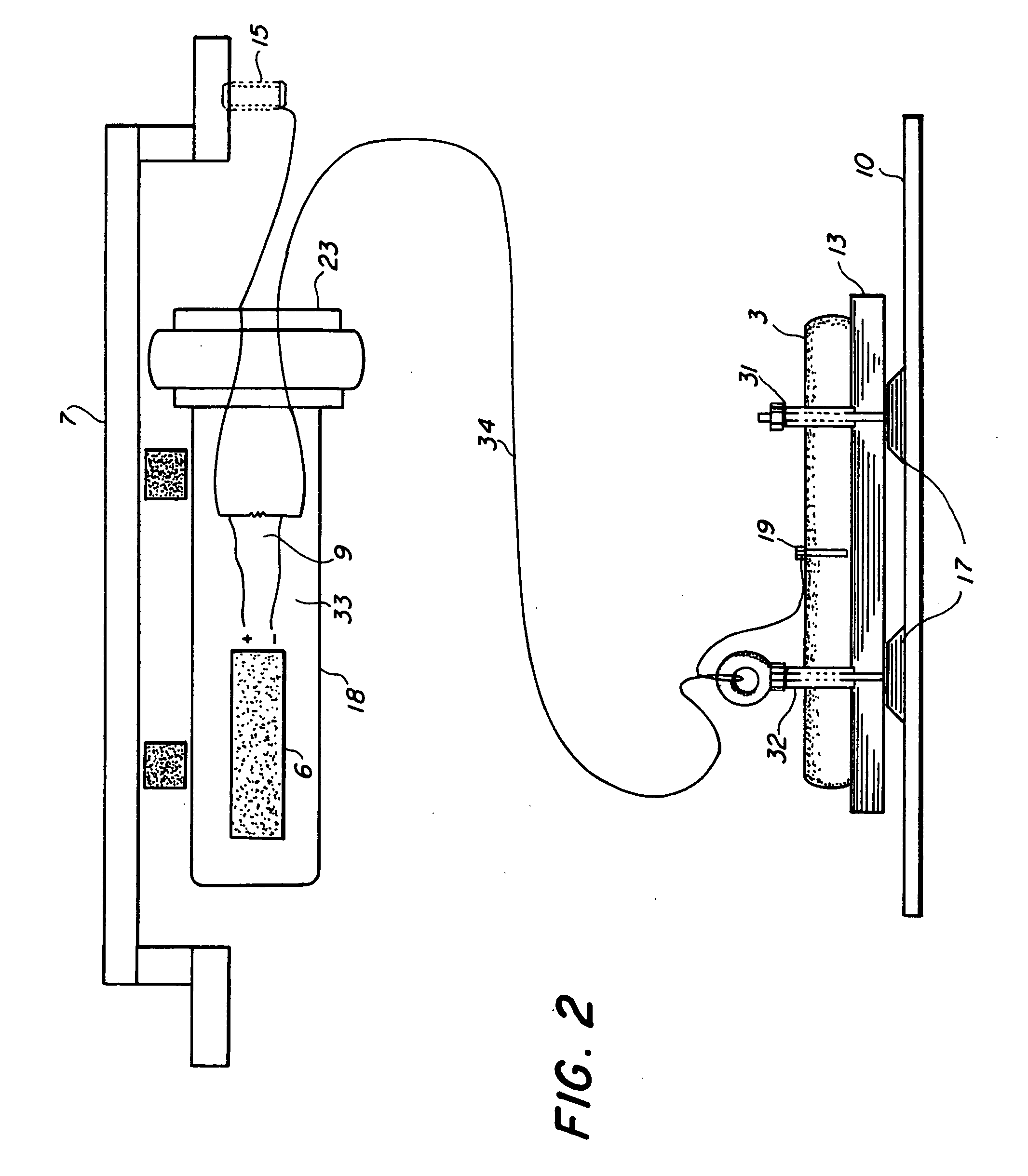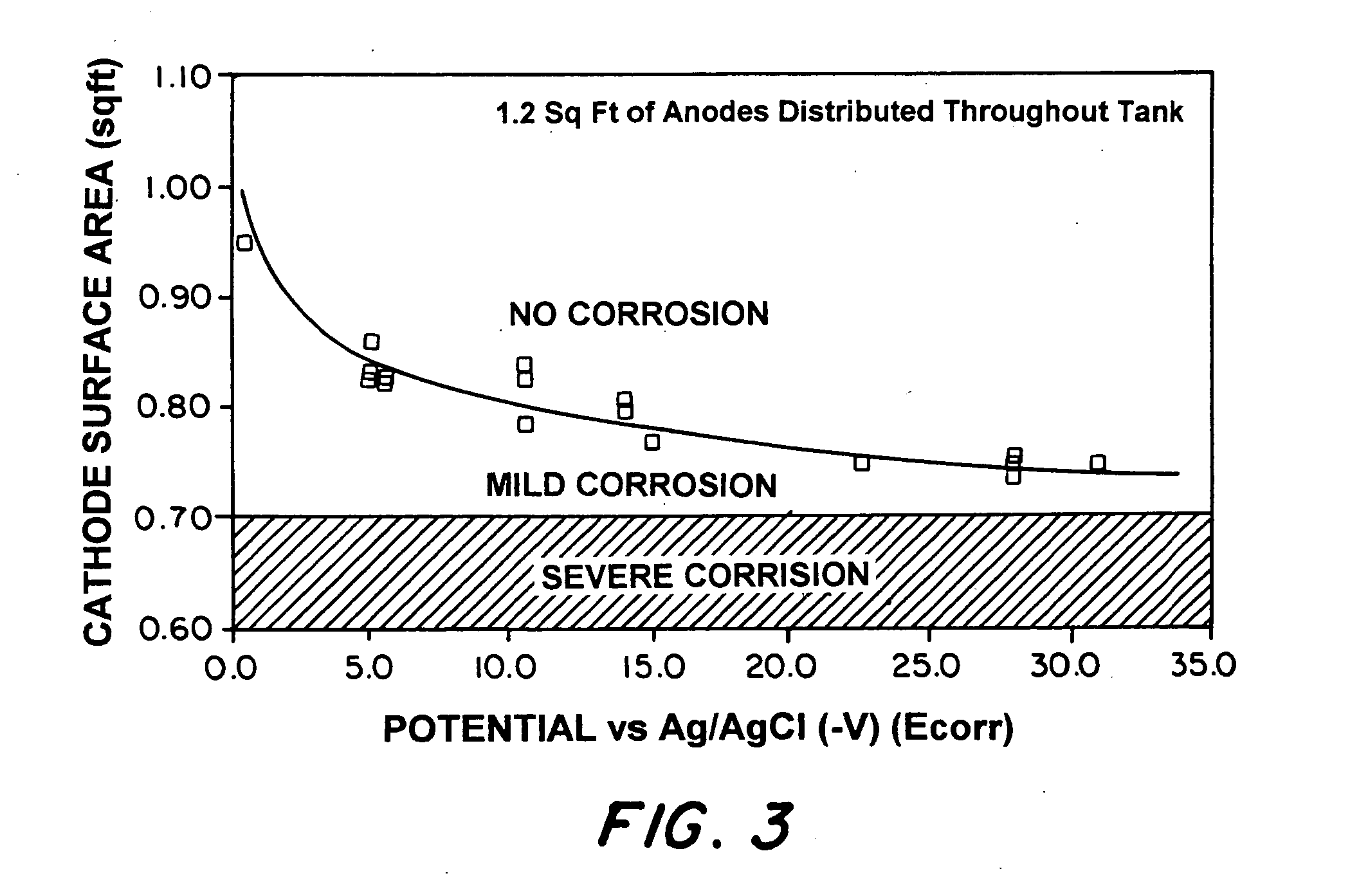Corrosion sensor
a technology of corrosion sensor and corrosion sensor, which is applied in the field of corrosion monitoring system, can solve the problems of high salinity, high humidity, and seawater tanks, and achieve the effects of easy comparison of ship tanks, easy integration, and fastness
- Summary
- Abstract
- Description
- Claims
- Application Information
AI Technical Summary
Benefits of technology
Problems solved by technology
Method used
Image
Examples
Embodiment Construction
Reference will now be made in detail to the present preferred embodiments of the present invention, examples of which are illustrated in the accompanying drawings, wherein like reference numerals refer to like elements throughout.
FIG. 1 is a diagram illustrating a preferred embodiment of a tank corrosion monitoring system 1 for use within a tank 10, according to a preferred embodiment of the present invention. The corrosion monitoring system 1 is a self contained package intended for in-situ installation within an individual ballast or compensated fuel tank. The corrosion monitoring system 1 includes: two reference half cells 2a and 2b, an instrumented sacrificial anode 3, a cable 4 for suspending the reference half cells 2a and 2b within the tank 10, a magnetic cable tensioner 5, a datalogger 6 for storage of voltage and current data, and a waterproof electronics enclosure 18.
The two potential reference half-cells 2a and 2b, shown in FIG. 1, are Silver / Silver Chloride (Ag / AgCl)...
PUM
 Login to View More
Login to View More Abstract
Description
Claims
Application Information
 Login to View More
Login to View More - R&D
- Intellectual Property
- Life Sciences
- Materials
- Tech Scout
- Unparalleled Data Quality
- Higher Quality Content
- 60% Fewer Hallucinations
Browse by: Latest US Patents, China's latest patents, Technical Efficacy Thesaurus, Application Domain, Technology Topic, Popular Technical Reports.
© 2025 PatSnap. All rights reserved.Legal|Privacy policy|Modern Slavery Act Transparency Statement|Sitemap|About US| Contact US: help@patsnap.com



